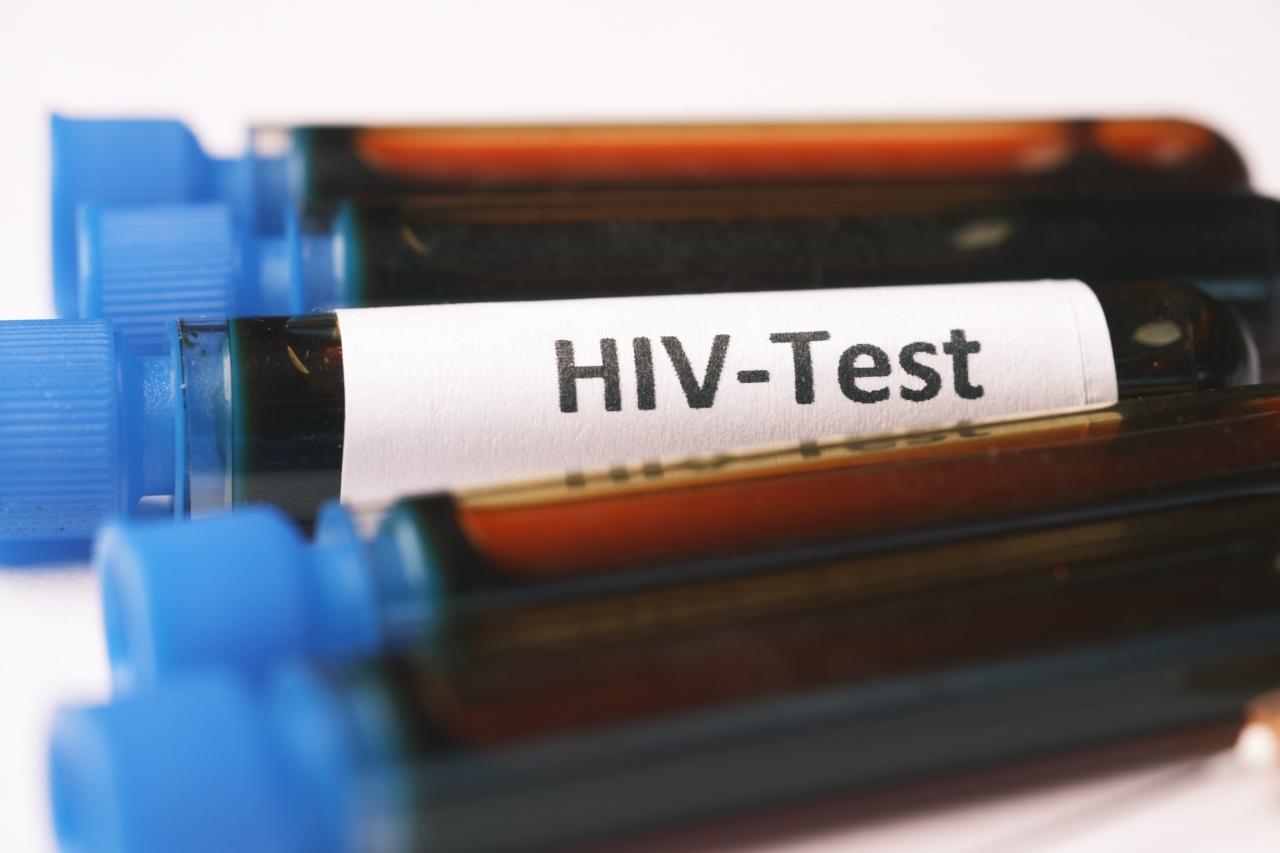HIV testing is an essential component of HIV prevention and treatment. It plays a crucial role in preventing the spread of HIV and ensuring that people living with HIV receive the care and treatment they need to stay healthy.
In this article, we will explore the importance of HIV testing and how it can help individuals and communities combat the HIV epidemic.
What is HIV testing?
HIV testing is a medical test performed to determine if someone is infected with the human immunodeficiency virus (HIV). HIV is a virus that attacks the body’s immune system, which can lead to acquired immunodeficiency syndrome (AIDS).
There are several different types of HIV tests, including blood tests, oral tests, and self-tests. The most common type of HIV test is a blood test, which looks for HIV antibodies in a person’s blood.
Why is HIV testing important?
There are many reasons why HIV testing is important. Here are just a few:.
- Early detection can lead to better health outcomes. When HIV is detected early, people living with HIV can start treatment sooner, which can help them live longer, healthier lives. HIV treatment can reduce the amount of virus in the body and prevent or delay the onset of AIDS and other HIV-related illnesses.
- Testing is the first step in preventing the spread of HIV. People who know their HIV status can take steps to prevent transmitting the virus to others. This includes using condoms during sex, practicing safe injection practices, and taking pre-exposure prophylaxis (PrEP) to prevent HIV transmission.
- HIV testing is a key part of HIV prevention efforts. In addition to the measures outlined above, HIV testing is an important part of HIV prevention efforts, as it allows healthcare providers to identify people at high risk of HIV and connect them with prevention services, such as condoms, PrEP, and counseling and testing services.
- HIV testing is a critical component of public health efforts to combat the HIV epidemic. HIV testing is an essential part of public health efforts to track the spread of HIV and develop targeted prevention and treatment interventions.
Who should get tested for HIV?
The Centers for Disease Control and Prevention (CDC) recommends that everyone between the ages of 13 and 64 get tested for HIV at least once as part of their routine healthcare.
In addition, people who are at high risk of HIV should get tested more frequently. Here are some examples of who is considered to be at high risk of HIV:.
- People who inject drugs and share needles or syringes
- Men who have sex with men (MSM)
- People who have unprotected sex
- People who have sex with someone who is HIV-positive or whose HIV status is unknown
- People who have been diagnosed with a sexually transmitted infection (STI)
If you are unsure about your risk for HIV, talk to your healthcare provider about getting tested.
What are the different types of HIV tests?
There are several different types of HIV tests, each with its own pros and cons. Here are some of the most common:.
- Antibody Tests: These tests look for antibodies to HIV in a person’s blood or saliva. They are the most common type of HIV test and can detect HIV antibodies within two to eight weeks after infection.
- Antigen Tests: These tests look for the presence of HIV proteins (antigens) in a person’s blood. They can detect HIV within two to four weeks after infection but are less accurate than antibody tests.
- Combined tests: These tests look for both HIV antibodies and antigens in a person’s blood, providing earlier detection than an antibody test alone.
- Self-tests: These tests allow individuals to test themselves for HIV at home using a kit that includes a sample collection device and instructions for use. Self-tests are available in both antibody and antigen formats.
How is HIV testing done?
The process of HIV testing varies depending on the type of test being used. Here is a general overview:.
- Blood tests: A healthcare provider will draw blood from the person’s arm and send it to a laboratory for analysis. The results are usually available within a few days.
- Oral tests: A healthcare provider will use a swab to collect a sample of the person’s oral fluids (such as saliva) and send it to a laboratory for analysis. The results are usually available within a few days.
- Self-tests: The person collects a sample of their blood or oral fluid using a sample collection device, and then uses a test kit to analyze the sample. Results are usually available within minutes.
What do HIV test results mean?
HIV test results can be positive or negative. Here is what those results mean:.
- Positive: A positive result means that HIV antibodies or antigens were detected in the person’s blood or oral fluids. This indicates that the person is infected with HIV and requires follow-up care and treatment.
- Negative: A negative result means that no HIV antibodies or antigens were detected in the person’s blood or oral fluids. However, it is important to remember that it can take up to three months after infection for HIV antibodies to show up in the blood, so people who think they may have been exposed to HIV should get tested again after three months.
Where can I get tested for HIV?
There are many places to get tested for HIV, including:.
- Healthcare clinics
- Community health centers
- STD clinics
- Free HIV testing events
- Pharmacies
Some people may also be eligible for free HIV testing through their insurance or government programs such as Medicaid.
Conclusion
HIV testing is an essential tool in the fight against HIV. Testing can help people living with HIV stay healthy and prevent the spread of the virus to others.
It is important for everyone to know their HIV status, and for people at high risk of HIV to get tested regularly. If you have not been tested for HIV recently, talk to your healthcare provider about getting tested as soon as possible.





























